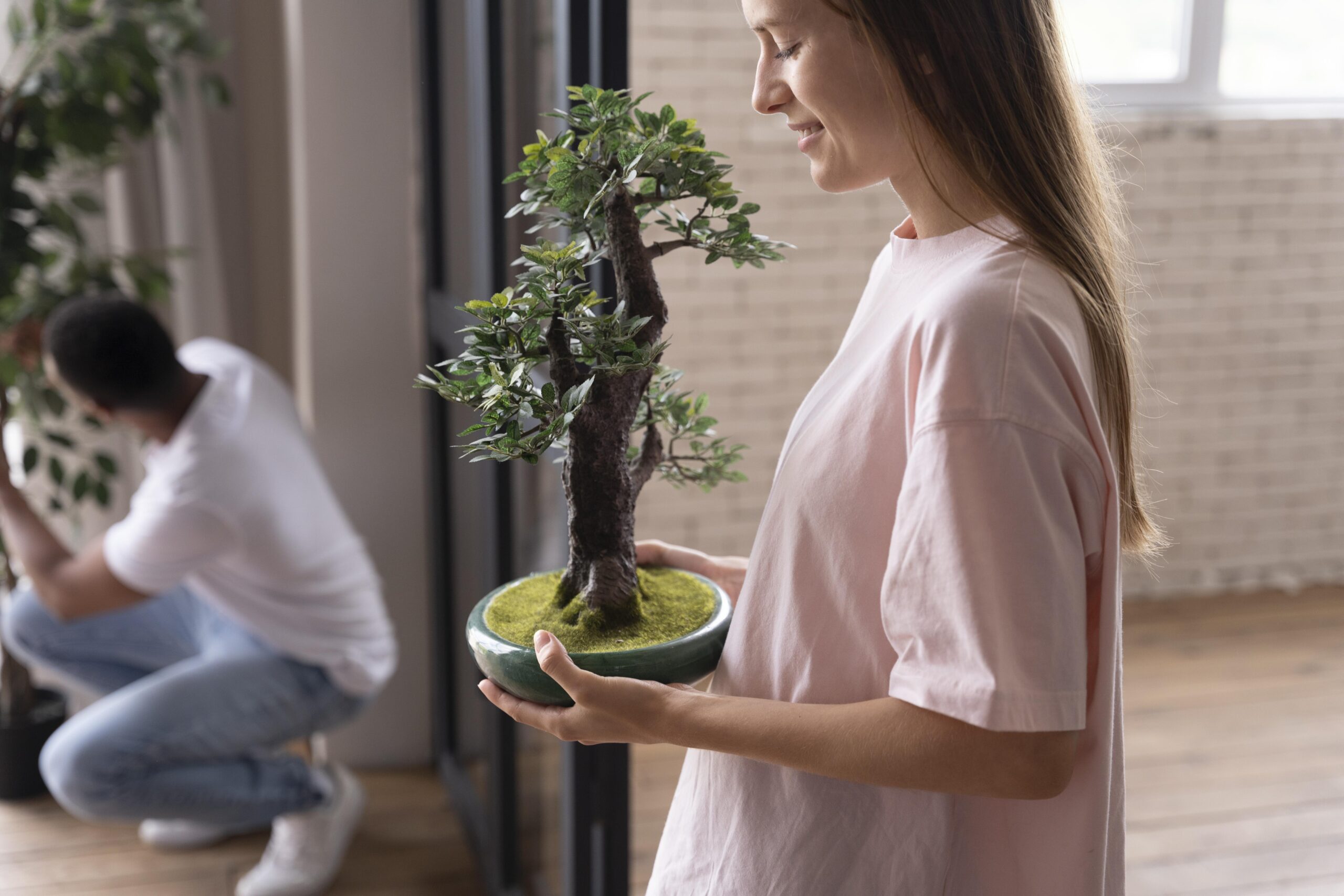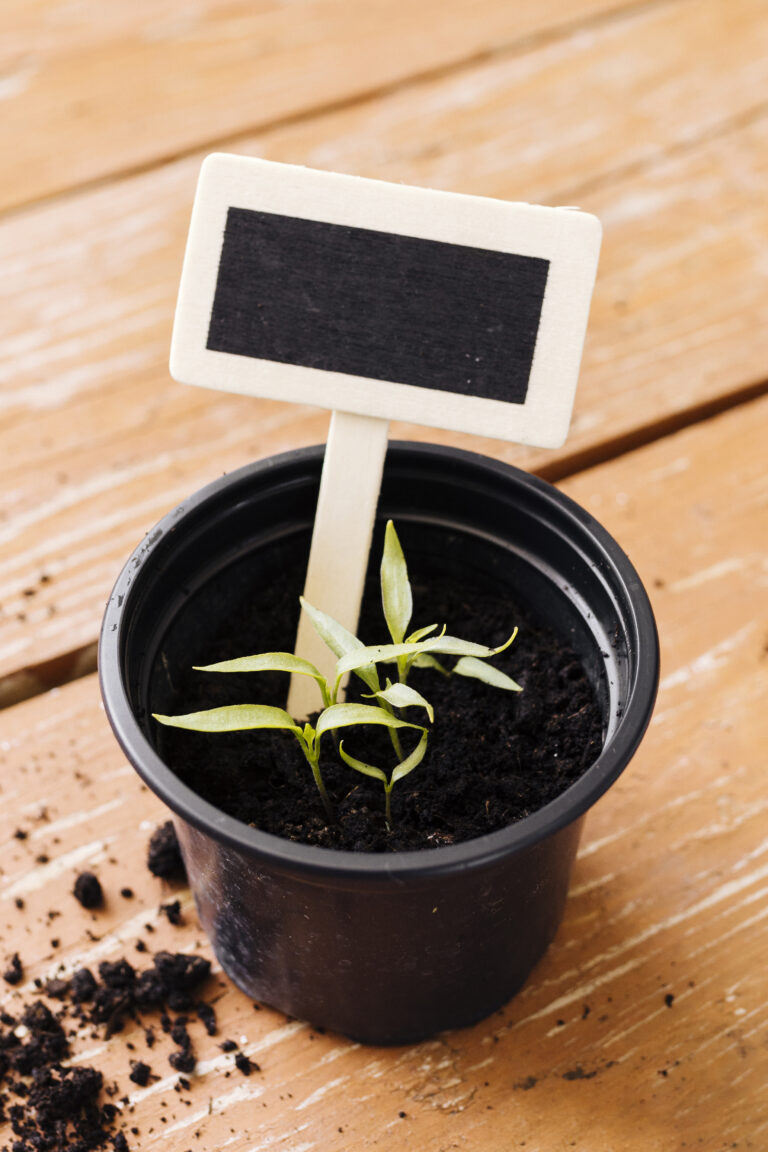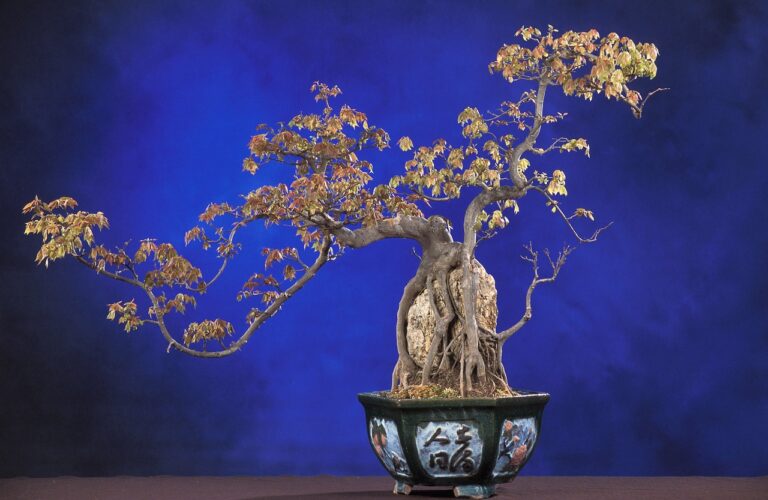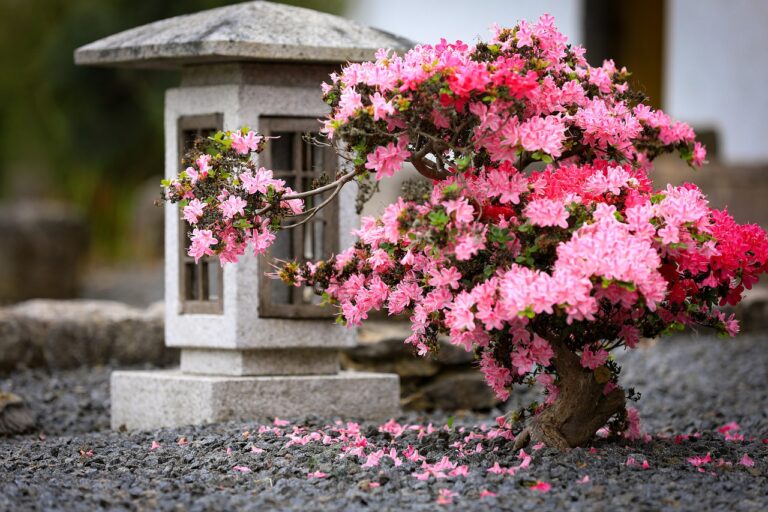Bonsai in Small Apartments, Tiny Trees, Big Impact
Bonsai, the ancient art of cultivating miniature trees, offers a serene connection to nature that can be enjoyed even within the confines of a small apartment. With the right knowledge and techniques, creating stunning bonsai displays becomes not only feasible but also deeply rewarding. In this detailed guide, we’ll delve into every aspect of growing bonsai in small apartments, covering light requirements, space-saving techniques, suitable species selection, and essential maintenance tips to help you embark on your bonsai journey with confidence and success.
Understanding Light Requirements for Bonsai in small apartments

Natural Light:
Positioning your bonsai near windows that receive ample natural light is essential for their health and vitality. South-facing windows are preferred as they receive the most sunlight throughout the day, providing the ideal conditions for photosynthesis. However, east or west-facing windows can also suffice, albeit with slightly less intense light. It’s important to be mindful of any obstructions that may block sunlight, such as buildings or trees, and to rotate your bonsai periodically to ensure even exposure.
Supplemental Lighting:
In apartments with limited access to natural light, supplementing with artificial grow lights can be highly beneficial. LED grow lights are energy-efficient and can be adjusted to provide the specific spectrum and intensity of light required by different bonsai species. By strategically placing grow lights above your bonsai, you can ensure they receive consistent and adequate illumination, promoting healthy growth and development even in low-light environments.
Space-Saving Techniques for Small Apartments
Vertical Gardening:
Utilizing vertical space is key to maximizing the available growing area in small apartments. Consider installing wall-mounted shelves or hanging planters to showcase your bonsai collection without encroaching on valuable floor space. By arranging bonsai vertically, you not only conserve space but also create an eye-catching display that adds visual interest to your living environment.
Tiered Stands:
Investing in tiered bonsai stands or shelves allows you to create multi-level displays that make efficient use of space while showcasing your bonsai collection in an elegant manner. By arranging bonsai at different heights, you can create depth and dimensionality, transforming even the smallest corner of your apartment into a miniature arboreal paradise.
Miniature Bonsai:
Opting for smaller bonsai varieties or cultivating your bonsai to remain compact is another effective strategy for small apartments. Species such as Ficus, Jade, or Chinese Elm are well-suited for confined spaces and can be trained to maintain a petite size through regular pruning and shaping. By selecting bonsai with inherently small leaves and branches, you can achieve a harmonious balance between form and space, creating a captivating miniature landscape within your home.
Suitable Species of bonsai for Small Apartments
Ficus (Ficus spp.):
Known for their versatility and adaptability, Ficus bonsai are ideal for indoor cultivation in small apartments. These resilient trees thrive in bright, indirect light and can tolerate a wide range of environmental conditions, making them perfect for beginners and experienced enthusiasts alike.
Jade (Crassula ovata):
With their thick, succulent leaves and distinctive appearance, Jade bonsai are prized for their resilience and ease of care. These hardy trees prefer bright light and infrequent watering, making them well-suited for indoor cultivation in small apartments where space and natural light may be limited.
Chinese Elm (Ulmus parvifolia):
Renowned for their small leaves and intricate branching patterns, Chinese Elm bonsai are a popular choice among bonsai enthusiasts. While they can tolerate indoor conditions, they benefit from exposure to direct sunlight for a few hours each day, making them ideal for placement near south-facing windows in small apartments.
Dwarf Mugo Pine (Pinus mugo var. pumilio):
As the name suggests, this miniature pine species is well-suited for bonsai cultivation in small apartments. Dwarf Mugo Pines require ample sunlight and well-draining soil to thrive indoors, making them suitable for placement near windows or under artificial grow lights.
Maintenance Tips for Bonsai in small apartments
Watering:
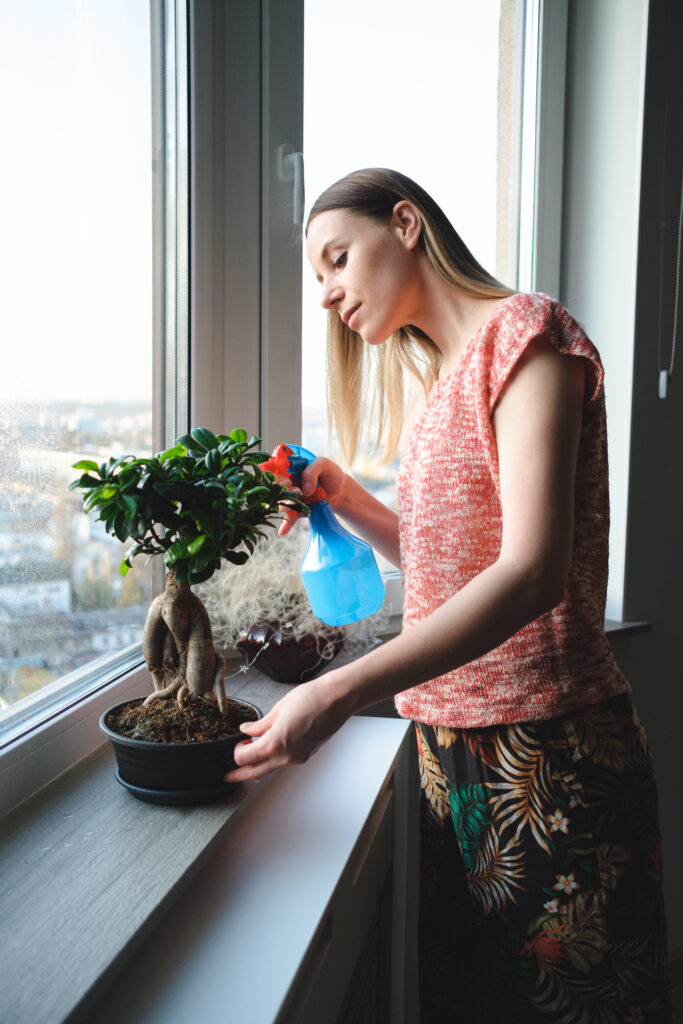
Proper watering is essential for the health and well-being of indoor bonsai. Avoid overwatering by allowing the soil to partially dry out between waterings, using a moisture meter or testing the soil with your finger to gauge moisture levels accurately. Ensure that excess water can drain freely from the pot to prevent waterlogged roots, which can lead to root rot and other problems.
Pruning and Shaping:
Regular pruning and shaping are necessary to maintain the desired size and form of your bonsai. Use sharp pruning shears to make clean cuts, removing any dead, diseased, or overgrown branches. Pay attention to the natural growth pattern of your bonsai and prune accordingly to enhance its aesthetic appeal and promote healthy growth.
Repotting:
Repotting your bonsai every couple of years is essential to prevent root-bound growth and replenish the soil’s nutrients. Choose a well-draining bonsai soil mix and carefully transplant your tree during its dormant period, typically in early spring or late winter. Gently remove the bonsai from its pot, prune the roots as needed, and repot it in fresh soil, ensuring that the root ball is positioned correctly and securely anchored in the pot.
By following these guidelines, you can successfully cultivate beautiful bonsai in small apartments. With patience, care, and a bit of creativity, you’ll be able to enjoy the timeless beauty of bonsai right in the comfort of your own home, creating a serene oasis amidst the hustle and bustle of urban life. Whether you’re a seasoned bonsai enthusiast or a novice gardener, growing bonsai in small apartments offers a rewarding opportunity to connect with nature and cultivate a sense of peace and tranquility in your living space.

